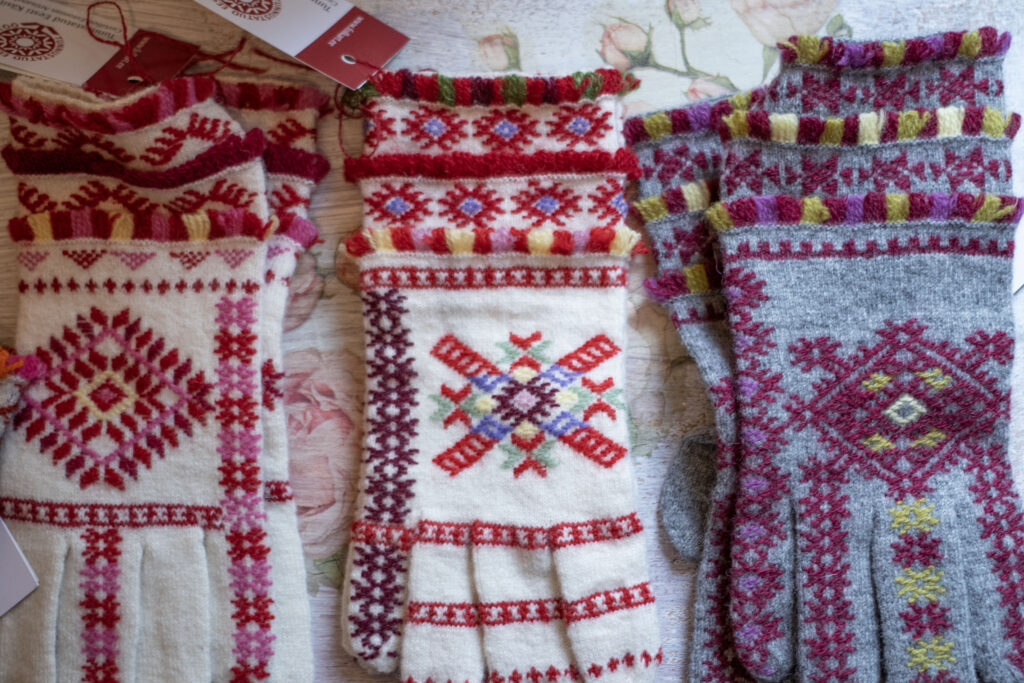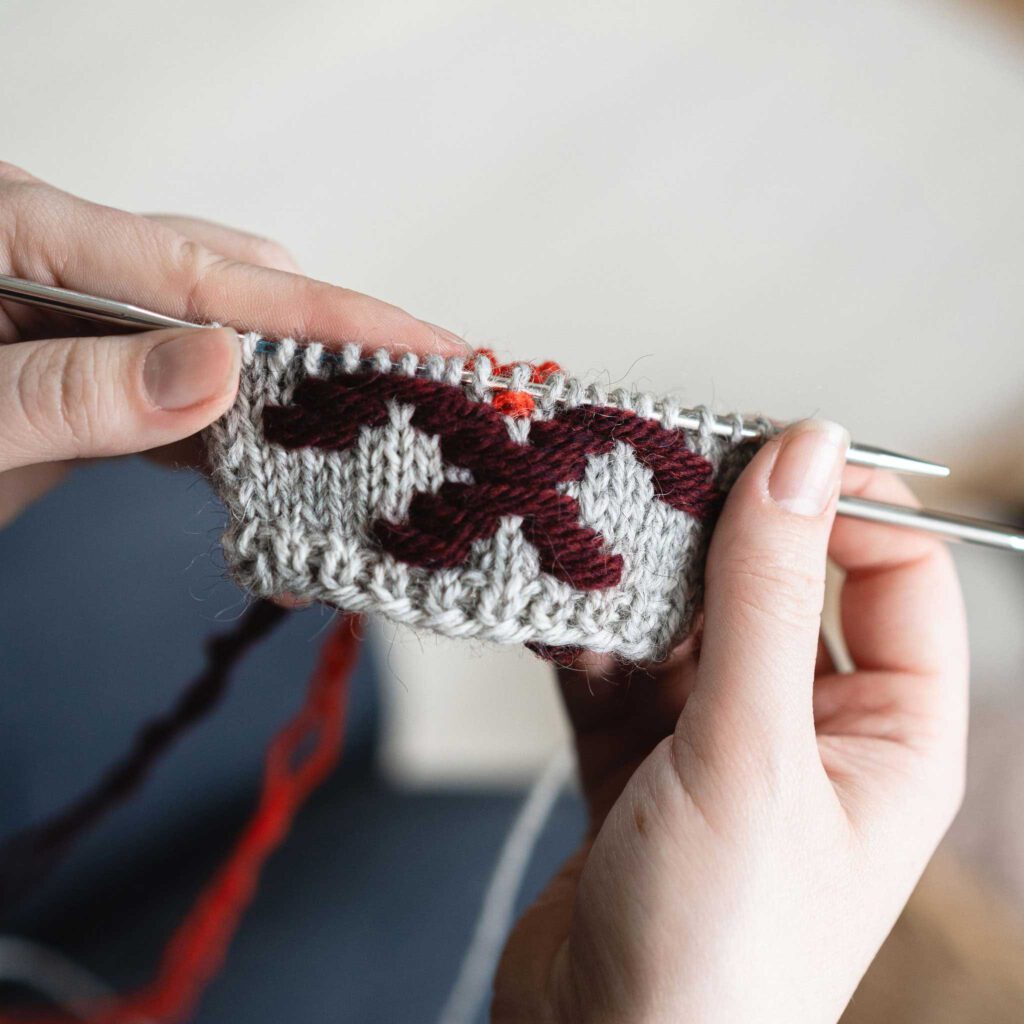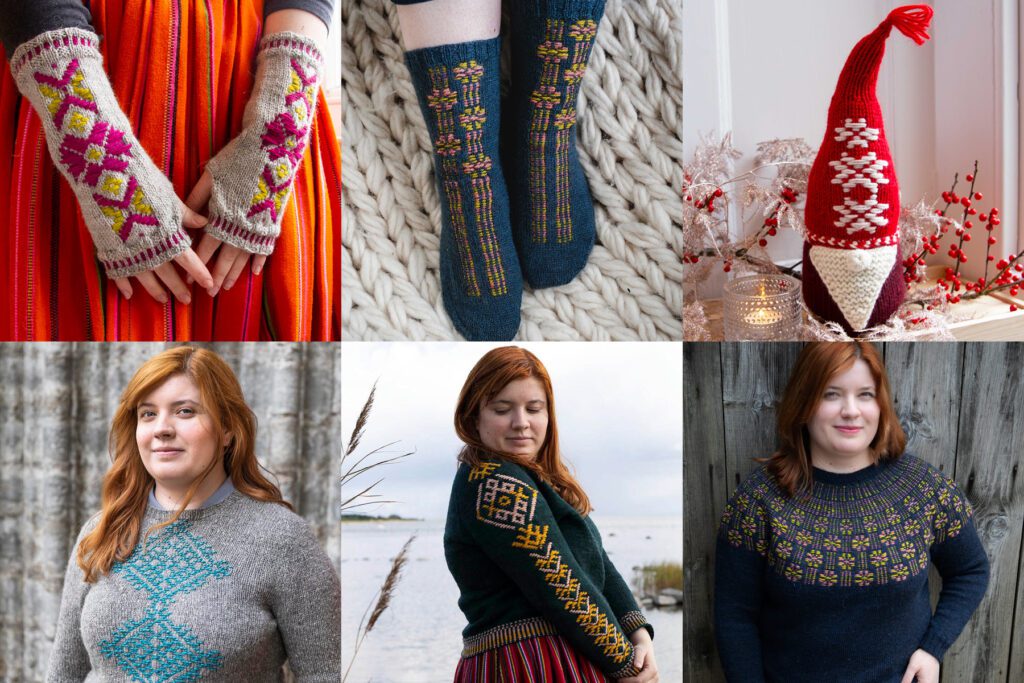[Read on for Canadian workshop details included below]
Estonian knitting is having a moment in the knitting world. More and more knitters are becoming familiar with our beloved country through knitting. The technique that is catching the eye of knitter’s around the world is roosimine inlay knitting. I would like to say I’ve played a small role in its rise in popularity for what was a little-known technique even in Estonia.
Roosimine was forgotten for a period of about 100 years, as there was no written record of how it was done.
Roosimine (also called roositud) is a technique originating from Tõstamaa in southwestern Estonia. It creates the appearance of embroidery, or weaving, through cleverly made intentional floats of contrasting colours worked while knitting. This technique has been used traditionally on stockings and gloves from Tõstamaa. It is a technique that creates eye-catching patterns, which may look challenging to knit, but is deceptively easy.

Roosimine was forgotten for a period of about 100 years, as there was no written record of how it was done. It has now been rediscovered and brought back into current knitting knowledge thanks to Anu Randmaa. She researched the technique from archival knitwear and photographs of rahvarõivad (traditional folk costume) in the process of creating stockings for her Tõstamaa folk costume. Anu Randmaa runs the Tõstamaa Käsitöökeskus (Handicraft Centre) and has since trained knitters in the area to knit roosimine. I am fortunate to have worked with her to help keep this technique going and ensure that, between us, there are now written and video records of how roosimine is done.
Workshops are a great opportunity to learn and try on a bunch of my roosimine pattern knit samples for inspiration for your next knitting project.
In Tõstamaa, they keep the tradition of very finely knit roosimine gloves alive, while I create modern, traditional-inspired knitting patterns for the everyday knitter to love and wear. It allows this technique to have wider appeal and to be more approachable for beginners. The traditional gloves are knit on small needles between US 000-0 / 1.5 -2mm. I teach and publish knitting patterns using larger needle sizes ranging from US 1 to US 8 / 2.25mm to 5mm needles. It is one of the most popular techniques that I teach. It also appears in most patterns in my collection of designs.
You can learn from me in-person at one of my upcoming workshops, including stops in Canada this year at Knit City Calgary from August 16th to 18th and at Koigu Farm in Chatsworth, Ontario on August 23rd. Workshops are a great opportunity to learn and try on a bunch of my roosimine pattern knit samples for inspiration for your next knitting project.
[See all of Aleks' workshop tour dates *here*]

My roosimine knitting patterns blend traditional Estonian knitting together with modern knitting styles, using the wide variety of yarns now available. I also incorporate roosimine in sweater patterns, as I think it’s a technique worthy of showing off on a bigger scale than just gloves.
If you want to try out roosimine, I suggest these excellent beginner roosimine knitting patterns:
- Hilja mitts named after my vanaema (grandmother) Hilja Jukkum
- Lilleke socks
- Roosi Gnome
- Kilp sweater
- Seli sweater and cardigan
- Lilleke sweaters – there is a knit-a-long for these patterns beginning August 24th. You can join me and knitters around the world to knit these patterns in a supportive group setting.

On my website, you’ll find video tutorials included in the patterns, in addition to this introduction to roosimine tutorial video.
Aleks is a knitwear designer creating modern knitting patterns using little-known traditional Estonian techniques for unique wearable designs that are fun and rewarding to knit for all levels of knitters. Her book, Traditions Revisited – Modern Estonian Knits, brings together her designs and teaching as an introduction to Estonian knitting, both traditional and traditional-inspired.Aleks teaches knitting workshops all over the world in the UK, Europe, Canada, the United States, and Australia. You can find Aleks Byrd online at aleks-byrd.com and Instagram @aleksbyrd



